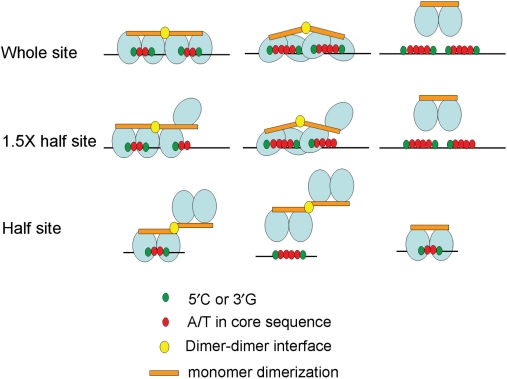Figure 7.
Model for p53 protein molecule-binding pattern to various A/T gap core sequences of the p53 response element. Wild-type p53 binds to a canonical p53 response element at the two-base A/T gap core sequence p53 whole site in a tetrameric manner, and each of the dimers binds to each p53 half site. Tetrameric wild-type p53 binds to two-base A/T gap core sequence at 1.5-fold p53 half sites by three of its monomers and leaves the other monomer free. p53 binds to two-base A/T gap core sequence p53 half-site core sequences by one of its dimers and leaves the other dimer free. Other binding patterns of p53 to a non-canonical p53 response element at four-base A/T gap core sequence of p53 response elements are similar to those of the two-base A/T gap core sequence in both the p53 whole site and 1.5-fold half site, but p53 cannot bind to the four-base A/T gap core sequence p53 half site. However, dimeric p53, p53A344,disrupting the dimer–dimer interface, can bind to two-base A/T gap core sequence p53 half sites, but not to four-base A/T gap core sequence p53 whole sites or 1.5-fold half sites.

